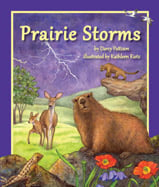Alignment to Standards for NJ

| Grade | Number | Standard |
|---|---|---|
| 2 | 5.3.2.B.2 | Compare how different animals obtain food and water. |
| 2 | 5.3.2.C.1 | Describe the ways in which organisms interact with each other and their habitats in order to meet basic needs. |
| 2 | 5.3.2.C.2 | Identify the characteristics of a habitat that enable the habitat to support the growth of many different plants and animals. |
| 2 | 5.3.2.E.2 | Describe how similar structures found in different organisms (e.g., eyes, ears, mouths) have similar functions and enable those organisms to survive in different environments. |
| 2 | 5.4.2.G.3 | Identify and categorize the basic needs of living organisms as they relate to the environment. |
| 4 | 5.3.4.A.2 | structures that have similar functions in various organisms, and explain how those functions may be carried out by structures that have different physical appearances. |
| 4 | 5.3.4.C.2 | Explain the consequences of rapid ecosystem change (e.g., flooding, wind storms, snowfall, volcanic eruptions), and compare them to consequences of gradual ecosystem change (e.g., gradual increase or decrease in daily temperatures, change in yearly rainfa |
| 4 | 5.3.4.E.2 | Evaluate similar populations in an ecosystem with regard to their ability to thrive and grow. |
| P | 5.3.P.A.1 | compare the basic physical characteristics of plants, humans, and other animals. |
| P | 5.3.P.B.1 | describe how plants and animals obtain food from their environment, |
| P | 5.3.P.C.1 | natural habitats provide for the basic needs of plants and animals with respect to shelter, food, water, air, and light (e.g., dig outside in the soil to investigate the kinds of animal life that live in and around the ground). |